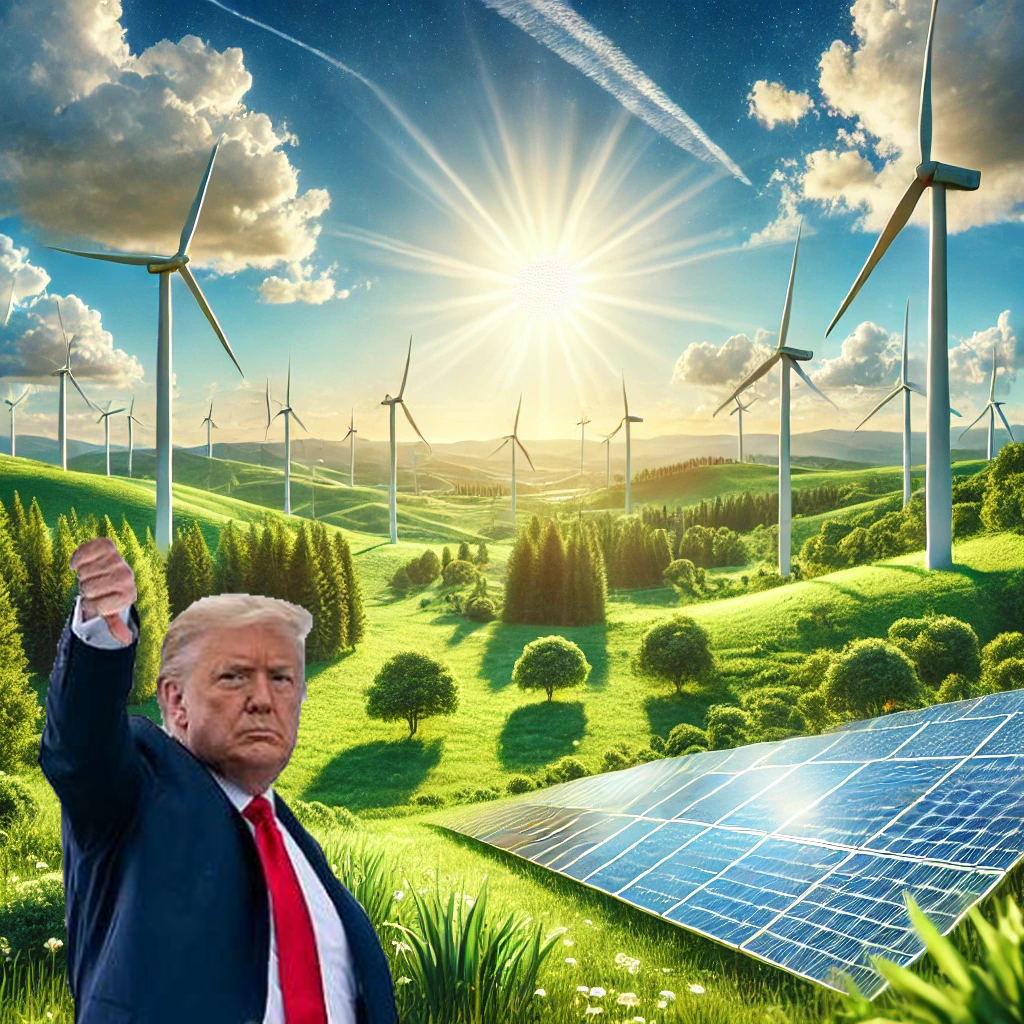President Donald Trump’s energy shift signals a bold pivot toward fossil fuels, promising a “golden age for America” through increased domestic production. With a unified Republican government controlling the presidency, the House, and the Senate, the administration has a clear path to implement sweeping changes. This shift can bolster natural gas-based technologies like solid oxide fuel cells (SOFCs) while presenting challenges for hydrogen-powered systems, posing both opportunities and risks for the energy sector.

Trump’s Energy Shift and Its Key Policies
Trump’s energy policies prioritize fossil fuels, including natural gas and oil, over renewable energy sources. On January 20, 2025, he declared a national energy emergency, emphasizing energy independence and the reduction of environmental regulations. This initiative revives several policies from his first term, such as withdrawing from the Paris Climate Agreement and expediting energy permits. The aim is clear: to lower energy costs, increase national security, and drive economic growth.
Fuel Cells: Winners and Losers Under Trump’s Energy Shift
Natural Gas-Based Fuel Cells
Natural gas is central to Trump’s energy agenda, which could significantly benefit solid oxide and molten carbonate fuel cell (SOFC and MCFC) technologies. Companies like Bloom Energy, which rely on natural gas for their fuel cells, stand to gain. With increased natural gas production reducing costs, Bloom Energy is positioned for higher profit margins. Recent financial reports indicate Bloom has improved gross margins, reflecting greater profitability from revenue growth.
Hydrogen Fuel Cells
However, Trump’s energy shift presents challenges for hydrogen-focused companies like Plug Power, Ballard Power Systems, and Nikola Corporation. Without a strong hydrogen policy, these firms may struggle to sustain growth. Their reliance on subsidies and government-backed hydrogen infrastructure leaves them vulnerable under an administration favoring fossil fuels.
Unified Republican Government: A Legislative Advantage
A unified Republican government allows Trump to advance his energy policies with fewer obstacles. Historically, unified governments have facilitated major legislative achievements. For example, the 2017 Tax Cuts and Jobs Act passed swiftly under Republican control. However, internal party divisions can still pose challenges, as seen during earlier Republican-led Congresses.
The current Republican majority in the House and Senate may streamline Trump’s initiatives, particularly his energy policies. This alignment enables quicker action on bills that support domestic energy production, potentially expediting fossil fuel projects and infrastructure.
Historical Context of Unified Governments
Throughout U.S. history, periods of unified government have had mixed results. The 89th Congress (1965-1967), controlled by Democrats, passed landmark legislation like the Civil Rights Act and Medicare. Conversely, legislative overreach under unified control has led to electoral backlash, such as the Republican losses in the 2006 midterms following the Iraq War and Hurricane Katrina responses.
Trump’s unified government may similarly face risks if its energy policies are seen as neglecting renewable energy or environmental concerns. However, the administration’s focus on fossil fuels aligns with its vision of economic growth and energy independence, framing green energy initiatives as secondary to these goals.
Implications for Green Energy
Trump’s energy shift directly challenges green energy by prioritizing fossil fuels over renewable energy sources. While this benefits companies reliant on natural gas, it slows progress for hydrogen technologies and other renewable solutions. Critics argue that this policy shift undermines long-term environmental goals, while supporters claim it ensures economic stability and energy security.
Conclusion: Fuel Cells in the Era of Trump’s Energy Shift
Trump’s energy shift represents a pivotal moment for the U.S. energy landscape. Companies like Bloom Energy, operating in the natural gas space, are well-positioned to thrive, while hydrogen-focused firms may face delays in growth. The administration’s emphasis on fossil fuels underscores its broader economic goals, even as it sparks debate about the future of green energy.
Disclaimer: This article is for informational purposes only and does not constitute financial or investment advice. Readers should conduct their own research or consult a professional before making decisions.
